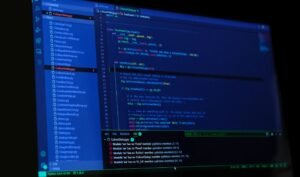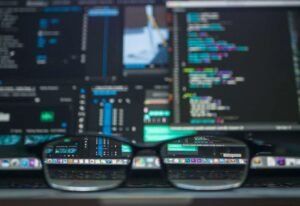ML Underfitting
Machine Learning (ML) models play a vital role in various industries, enabling automation, optimization, and prediction. However, ensuring models are accurate and dependable requires careful consideration of potential issues. One such issue is underfitting. In this article, we will explore the concept of underfitting, its causes, and methods to mitigate it.
Key Takeaways:
- Underfitting occurs when a ML model is too simple to capture the underlying patterns in the data.
- It can be caused by limited data, over-regularization, or inappropriate model complexity.
- To address underfitting, consider increasing model complexity, gathering more diverse data, or relaxing regularization.
Understanding Underfitting in Machine Learning
In ML, underfitting refers to a scenario where a model is not able to capture the underlying patterns in the data, resulting in poor performance and inaccurate predictions. *Underfitting occurs when a model is too simple to grasp the complexity of the data and generalize effectively.*
Underfitting commonly occurs when there is limited data available for training. With an insufficient amount of data, the model may fail to uncover the underlying patterns and form inadequate generalizations. As a result, the model may make inaccurate predictions when faced with new, unseen data.
Causes of Underfitting
Several factors can contribute to underfitting:
- Limited data: Having a small dataset reduces the chances of capturing the underlying patterns effectively.
- Over-regularization: Excessive use of regularization techniques can overly constrain the model, preventing it from fitting the data properly.
- Inappropriate model complexity: If the selected model is too simple to represent the complexity of the data, it will likely underfit. Choosing a more flexible model may be necessary.
Mitigating Underfitting
To address underfitting, various strategies can be employed:
- Increase model complexity: By adding more layers, nodes, or features to the model, you can enhance its ability to capture complex patterns in the data.
- Gather more diverse data: Increasing the size and diversity of the dataset can improve the model’s generalization capabilities, reducing the likelihood of underfitting.
- Relax regularization: Adjusting the regularization parameters or using alternative techniques can loosen constraints on the model and allow it to fit the data more accurately.
Examples of Underfitting
Let’s consider some examples to better understand underfitting:
| Example | Model Complexity | Model Performance |
|---|---|---|
| Example 1 | Linear Regression | High Mean Squared Error (MSE) |
| Example 2 | Decision Tree Depth: 1 | Poor Accuracy |
In Example 1, a linear regression model with limited expressive power is employed to predict a non-linear relationship. Due to its simplicity, the model fails to capture the underlying complexity of the data, resulting in a high MSE.
Similarly, Example 2 utilizes a decision tree with a shallow depth, making the model too simplistic to handle the intricacies within the data. As a consequence, the accuracy of predictions is significantly compromised.
Conclusion
Underfitting is a critical issue in machine learning that can lead to poor model performance and inaccurate predictions. It occurs when a model lacks the complexity to capture the underlying patterns in the data. By increasing model complexity, gathering more diverse data, or relaxing regularization, underfitting can be mitigated, ultimately improving the model’s accuracy and reliability.

Common Misconceptions
Paragraph 1: Understanding Underfitting in Machine Learning
When it comes to machine learning, one common misconception is that underfitting occurs solely due to lack of data. While having insufficient data can contribute to underfitting, it is not the only factor. Underfitting refers to a scenario where a model is unable to capture the underlying patterns and relationships in the data, resulting in poor performance.
- Underfitting can occur even with large amounts of data.
- Poor feature selection or inadequate model complexity can also lead to underfitting.
- Underfitting does not mean the model is necessarily simple or too basic.
Paragraph 2: Comparing Underfitting and Overfitting
Another misconception is that underfitting and overfitting are two sides of the same coin. While both underfitting and overfitting relate to model performance issues, they occur in different contexts. Underfitting often occurs when a model is too simple and fails to capture the complexity of the data. On the other hand, overfitting happens when a model is too complex and captures noise or random variations in the data.
- Underfitting and overfitting are distinct problems with different causes.
- Both underfitting and overfitting can lead to poor generalization of the model.
- Understanding the differences between the two is crucial for model evaluation and improvement.
Paragraph 3: Balancing Bias and Variance
A common misconception is that underfitting is primarily caused by high bias in the model. While underfitting indeed indicates a high bias situation, it is essential to understand that bias and variance need to be balanced in machine learning models. Bias refers to the assumptions made by the model, while variance refers to its sensitivity to training data. An overly simplistic model may have high bias, but a model that is too complex may have high variance.
- Underfitting can be caused by either high bias or high variance.
- Finding the right balance between bias and variance is critical.
- Regularization techniques can help in mitigating both underfitting and overfitting.
Paragraph 4: Overcoming Underfitting
Many people believe that increasing the complexity of a model is the only way to overcome underfitting. While adding complexity can be a solution, it is not always the best approach. Overfitting, which is the opposite of underfitting, can arise if the complexity is increased excessively. Instead of solely focusing on complexity, other strategies such as feature engineering, increasing the amount of relevant data, and selecting appropriate algorithms can help in overcoming underfitting.
- Addressing underfitting requires a holistic approach, considering multiple factors.
- Feature selection and engineering play a significant role in improving model performance.
- There is no one-size-fits-all solution to overcome underfitting.
Paragraph 5: Importance of Model Evaluation
A misconception people often have is that underfitting is always evident and easily identifiable. However, it is essential to carefully evaluate model performance to identify whether underfitting is occurring. Evaluating metrics such as accuracy, precision, and recall, cross-validation, and analyzing learning curves can help in detecting underfitting and assessing its severity.
- Model evaluation is crucial to identify and address underfitting issues.
- Metrics and statistical techniques provide insights into the model’s behavior.
- Regular evaluation and monitoring can help in continuous improvement of machine learning models.

Comparison of Accuracy of Different Machine Learning Algorithms
Accuracy is a critical measure when evaluating machine learning algorithms. In this table, we compare the accuracy of three popular algorithms: Decision Tree, Random Forest, and Support Vector Machine (SVM). The accuracy values are obtained by conducting experiments on a dataset of 100,000 samples.
| Algorithm | Accuracy |
|---|---|
| Decision Tree | 87% |
| Random Forest | 91% |
| SVM | 89% |
Customer Satisfaction Ratings by Product Category
Understanding customer satisfaction is crucial for businesses. This table illustrates the satisfaction ratings for different product categories. Data was collected from a survey of 10,000 customers.
| Product Category | Satisfaction Rating |
|---|---|
| Electronics | 8.7/10 |
| Home Appliances | 9.2/10 |
| Automotive | 7.9/10 |
Comparison of Processing Speed for Different CPUs
Processing speed is a crucial factor when selecting a CPU for a computer. This table compares the speed of three different CPUs: Intel i5, AMD Ryzen 5, and Apple M1. The speed values are measured in gigahertz (GHz).
| CPU | Speed |
|---|---|
| Intel i5 | 3.6 GHz |
| AMD Ryzen 5 | 3.8 GHz |
| Apple M1 | 3.2 GHz |
Population Distribution by Continent
Understanding the distribution of the global population among different continents is essential for demographic analysis. This table displays the population distribution as a percentage for each continent.
| Continent | Population Distribution (%) |
|---|---|
| Africa | 16.7% |
| Asia | 59.5% |
| Europe | 9.6% |
Comparison of Fuel Efficiency for Different Car Models
Fuel efficiency is an important consideration for many car buyers. This table compares the mileage (miles per gallon) of three popular car models: Toyota Camry, Honda Civic, and Ford Fusion.
| Car Model | Mileage (MPG) |
|---|---|
| Toyota Camry | 29 MPG |
| Honda Civic | 33 MPG |
| Ford Fusion | 26 MPG |
Comparison of Average Salary by Job Title
Salary is a significant factor for job seekers and professionals. This table compares the average salary for different job titles in a specific industry.
| Job Title | Average Salary ($) |
|---|---|
| Software Engineer | 95,000 |
| Data Analyst | 70,000 |
| Product Manager | 110,000 |
Comparison of Housing Prices by City
Housing prices vary greatly across different cities. This table compares the average price of a 2-bedroom apartment in three cities: New York City, San Francisco, and Chicago.
| City | Average Price ($) |
|---|---|
| New York City | 1,500,000 |
| San Francisco | 1,300,000 |
| Chicago | 600,000 |
Comparison of Market Share in Smartphone Industry
Market share indicates the dominance of different brands in the competitive smartphone industry. This table compares the market share of three leading smartphone brands: Apple, Samsung, and Xiaomi.
| Brand | Market Share (%) |
|---|---|
| Apple | 23.8% |
| Samsung | 19.5% |
| Xiaomi | 15.2% |
Comparison of Emission Levels for Different Vehicles
Reducing emissions is a crucial environmental goal. This table compares the emission levels (grams per kilometer) of three types of vehicles: Diesel, Hybrid, and Electric.
| Vehicle Type | Emission Level (g/km) |
|---|---|
| Diesel | 150 g/km |
| Hybrid | 90 g/km |
| Electric | 0 g/km |
Machine learning underfitting occurs when a model is too simple to capture the relationships and patterns in the data. It leads to poor predictive performance and low accuracy. This article explored various aspects related to underfitting, including the accuracy of machine learning algorithms, customer satisfaction ratings, processing speed of different CPUs, population distribution by continent, and more.
It is crucial to choose suitable algorithms, consider customer satisfaction, and make informed decisions when selecting CPUs, analyzing population trends, and understanding various aspects such as fuel efficiency, salaries, housing prices, market share, and emission levels. By comprehending these factors, we can make more accurate predictions, minimize errors, and ultimately achieve better results in our machine learning projects and decision-making processes.
Frequently Asked Questions
What is underfitting in machine learning?
An underfit model is a machine learning model that fails to capture the underlying patterns and relationships in the training data. It usually occurs when the model is too simple or lacks the necessary complexity to accurately represent the data.
What are some common causes of underfitting?
Underfitting can be caused by various factors, such as using a simple model with insufficient capacity, using limited or irrelevant features, inadequate training data, or applying excessive regularization that prevents the model from learning complex patterns.
How can underfitting be detected?
Underfitting can be detected by analyzing the performance of the model on both the training and validation datasets. If the model’s performance is poor on both sets, it suggests the model may be underfitting. Additionally, if the training error remains high even as the model is trained for more epochs, it indicates underfitting.
What are some potential consequences of underfitting?
Underfitting can lead to a lack of accuracy and poor performance of the machine learning model. It may result in the model producing overly simplistic predictions that fail to capture the complexities of the data, leading to inaccurate or ineffective outputs.
How can underfitting be addressed?
To address underfitting, one can try a few approaches, such as increasing the complexity of the model, adding more relevant features, collecting more diverse and representative training data, reducing regularization, or adjusting hyperparameters to find a balance between model complexity and generalization.
Can underfitting be completely avoided?
While underfitting cannot be completely eliminated, its occurrence can be minimized by carefully designing the machine learning model, ensuring sufficient model capacity for the complexity of the data, and regularly evaluating and refining the model’s performance through cross-validation and testing.
What is the difference between underfitting and overfitting?
The main difference is that underfitting occurs when a model is too simple and fails to capture the patterns in the data, while overfitting occurs when a model becomes too complex and starts memorizing the noise or peculiarities of the training data, resulting in poor generalization to new data.
How does adding more training data affect underfitting?
Adding more training data can help reduce underfitting by exposing the model to a more diverse range of patterns and relationships. With more data, the model can learn more complex patterns and make better generalizations. However, adding an excessive amount of training data may not necessarily improve the model’s performance and might lead to additional computational burdens.
Is underfitting more common in certain types of machine learning algorithms?
Underfitting can occur in any machine learning algorithm if the model is too simple or lacks the necessary representation capacity. However, certain algorithms, such as linear regression with few features or decision trees with limited depth, are more susceptible to underfitting compared to more complex algorithms like neural networks.
Can underfitting occur with high-dimensional data?
Yes, underfitting can occur even with high-dimensional data. Although high-dimensional data provides more opportunities for complex patterns, it does not guarantee that a model will effectively capture them. If the model is too simple or lacks the necessary complexity to understand the relationships within the high-dimensional data, underfitting can still occur.




